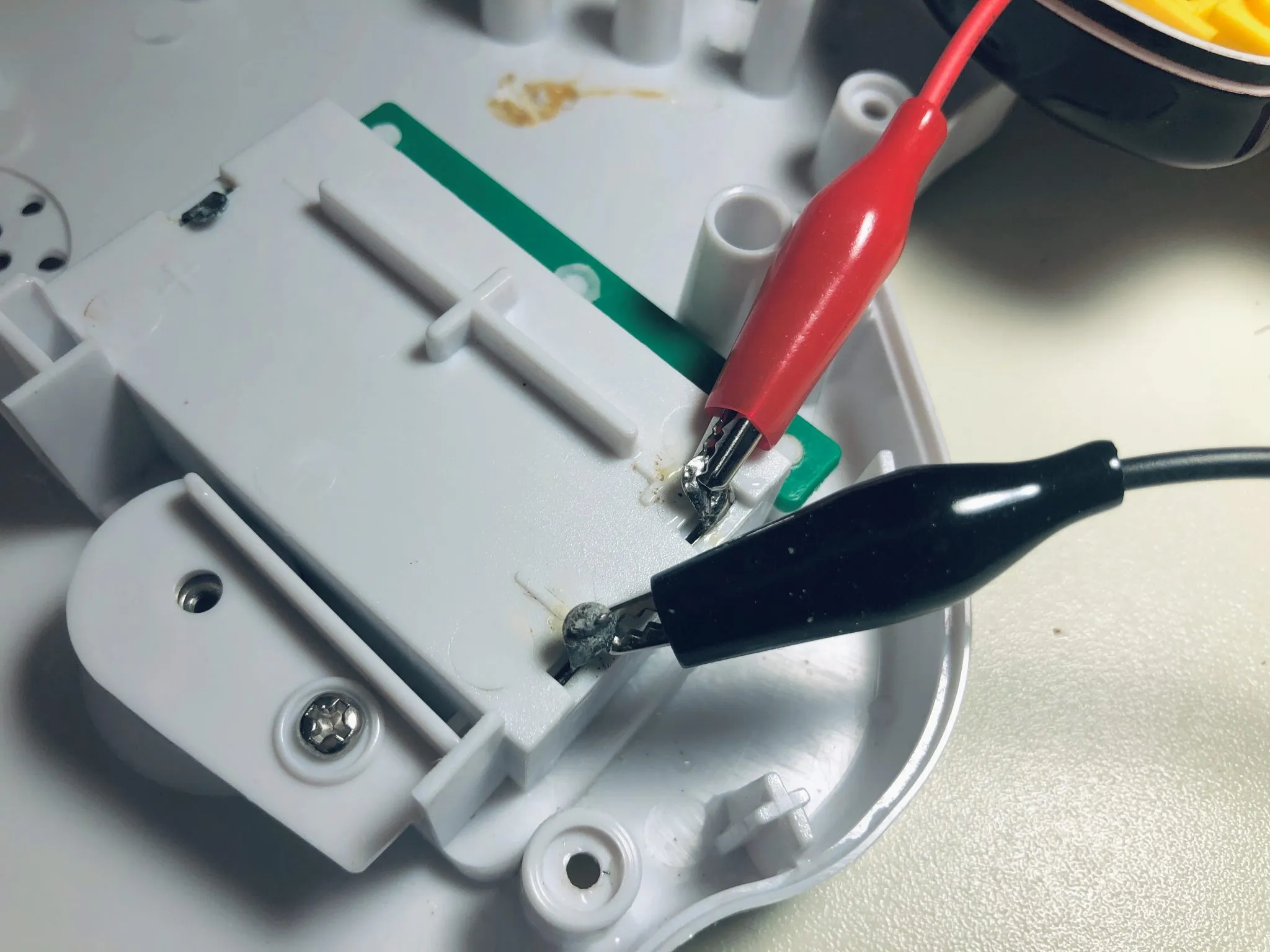
[Electronics] Cleaning Off Alkaline Battery Corrosion
How to get battery gunk off and out of battery components in everyday items
I got started on a new project with an electronic toy cow that runs on two AA alkaline batteries. The first blip I encountered was that it would not power on. Unscrewing and opening its battery compartment revealed a gunky interior from the batteries having leaked and dried up in it many moons ago.

Not wanting to write off this fine bovine specimen from part-harvesting just yet, I snipped the leads to its battery compartment and hooked them up to a fresh battery holder. A firm press of the cow’s yellow nose elicited a deep howl from the speaker grill in its forehead. This confirmed for me that the point of failure was at the battery compartment’s contact plates and terminals, due to the corrosion and residue preventing any conductivity between the batteries and the rest of the circuit. Considering that, I determined that it was still possible to give the cow a new lease on life with a good cleaning of its battery compartment.
Why Does Battery Leakage Happen?
Battery leakage happens as a battery naturally discharges over time, and in doing so releases a bit of hydrogen gas within; this creates internal pressure that results in the battery eventually bursting. The battery’s electrolyte (potassium hydroxide in the case of alkaline batteries) leaks out and upon being exposed to air, mixes with carbon dioxide to form potassium carbonate which is capable of corroding its surrounding area and continues to spread, further damaging the host electronic. A battery that has begun leaking should be removed and disposed, because it is bad for you.
My Cleaning Trick
There is a simple go-to treatment that I use to “fix” simple electronics that aren’t working due to leaks and residue, based on battery type. You can identify what battery type you are dealing with by checking its label/package or by looking up the product.
-
Alkaline Batteries: Distilled white vinegar (or something similarly acidic).
-
Mildly Acidic and Acidic Batteries: Paste made from baking soda (which is basic) + a dash of water.
In both cases described above, the substance being administered to the corroded/blighted areas works by neutralizing the electrolyte that leaked out.
In some cases no amount of cleaning will work when there is too much damage from corrosion.
Process
My cow runs on alkaline batteries, so distilled white vinegar it was:
- I poured some into a small dish - here, I used the lid of a jar I threw out. Don’t use anything that you’ll use again for your food!

- Then, using Q-tips soaked in white vinegar I dabbed the battery compartment’s springs, contact plates, and terminals to clean them:

- After going over these metal parts a handful of times until I was satisfied with the results, I used dry Q-tips and paper towels to tidy up the area:

Sometimes it is not possible to get 100% of the corroded gunk out of the way, especially if you can’t reach or thoroughly treat both sides of the battery compartment. Some spots are more stubborn than others. The more stuff you can get off the better, but it doesn’t have to be perfectly clean.
Testing
I popped in a fresh pair of batteries into the newly cleaned battery compartment and hooked up its terminals to the rest of the cow using alligator clip test leads.
When I pressed one of the buttons on the cow, it began to play the melody to Oh Susannah — so, I knew the cleaning worked.

Disclaimer
If you try this out I am not responsible for damages. I also suggest only using this method with small, simple electronics that run on typical batteries. I think there are comparable solutions out there for things like car batteries and that is beyond my area of experience/knowledge.